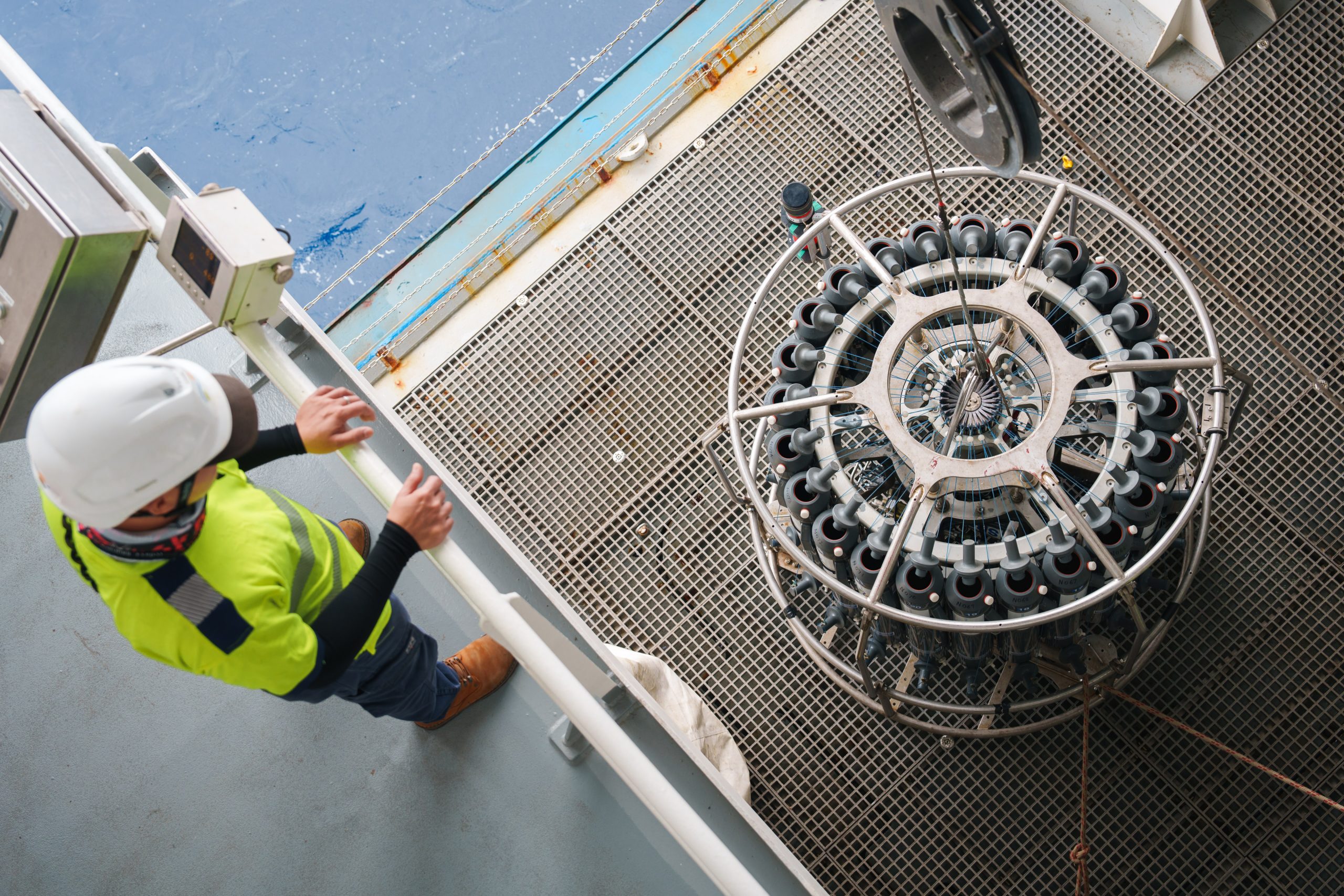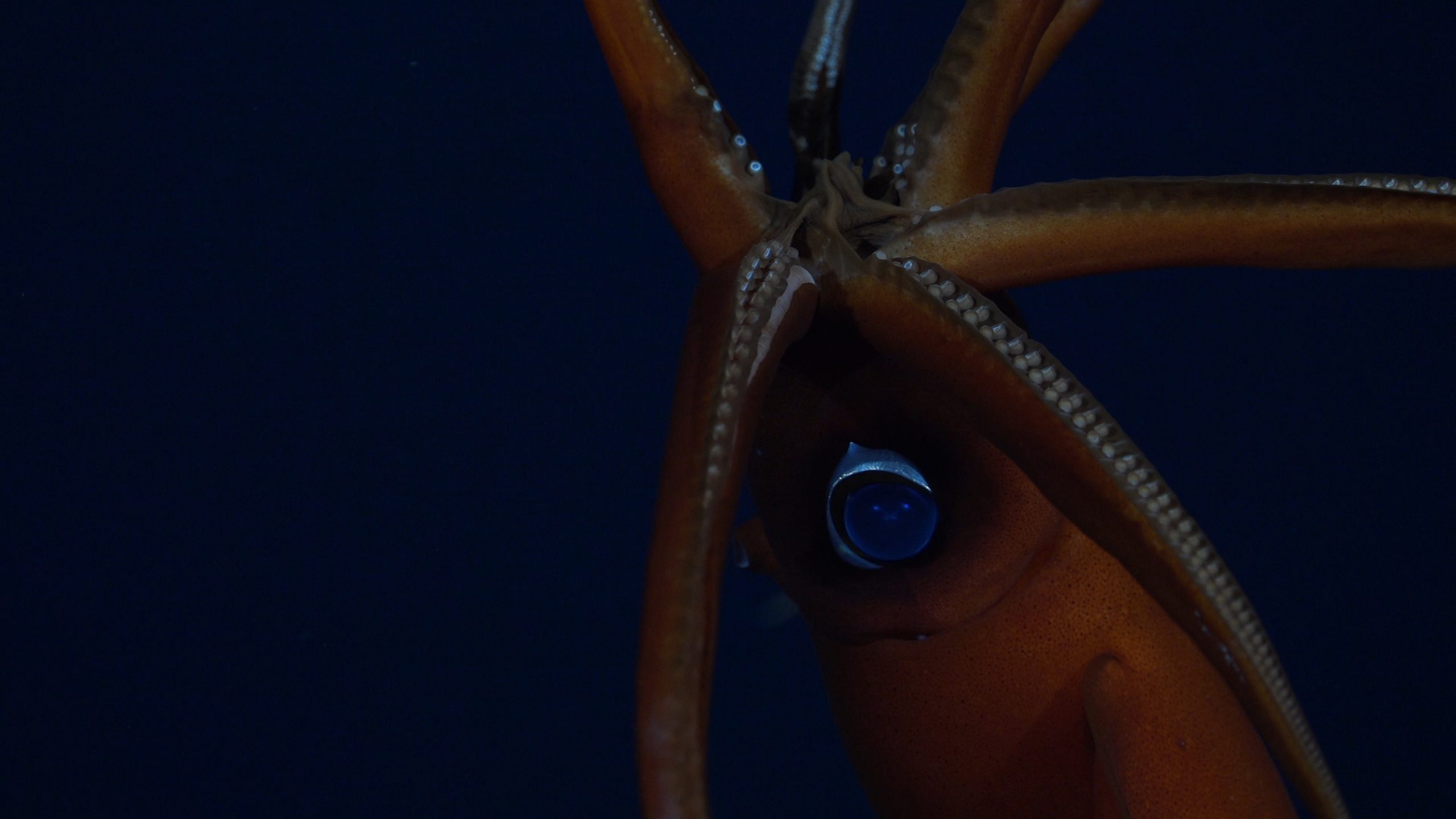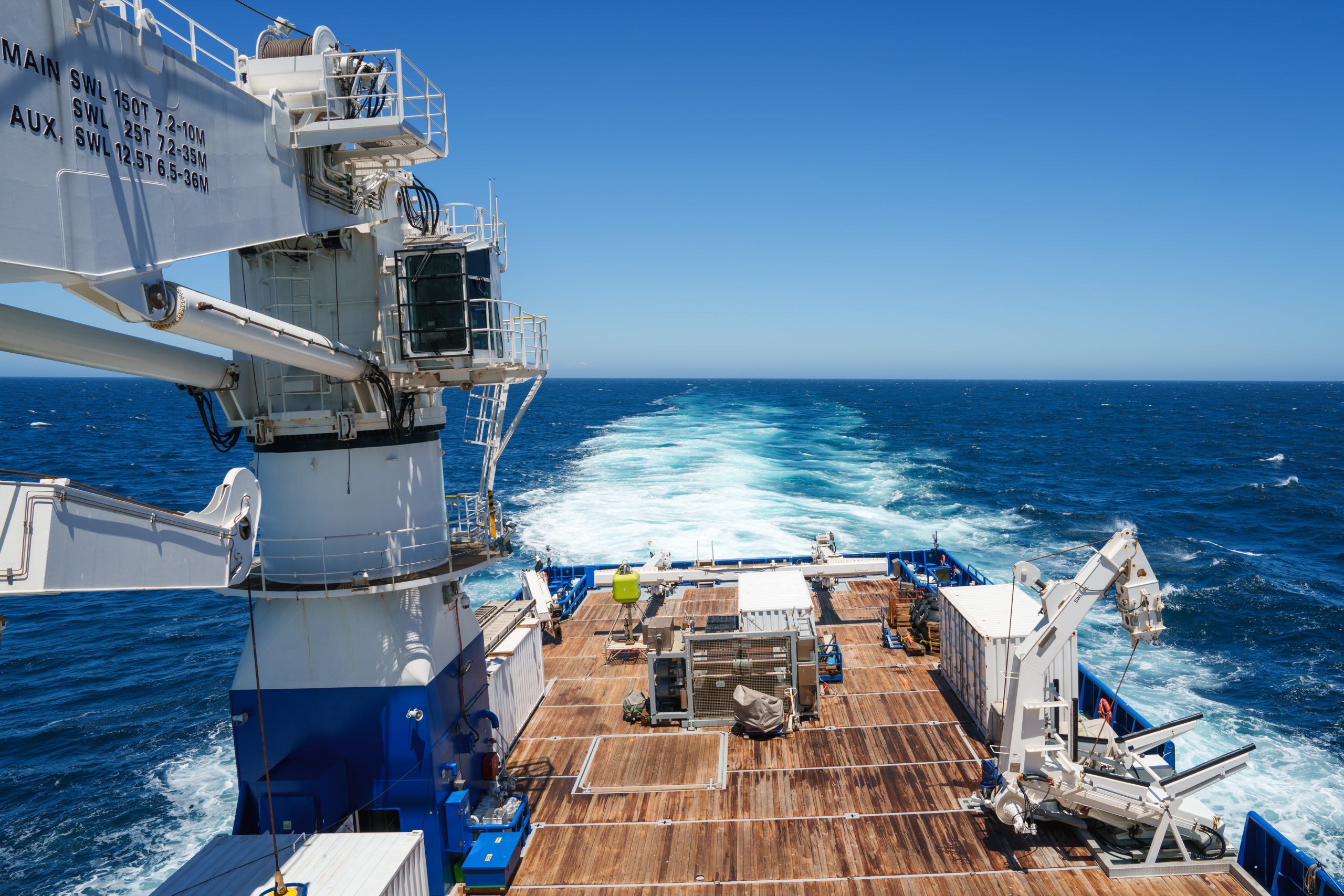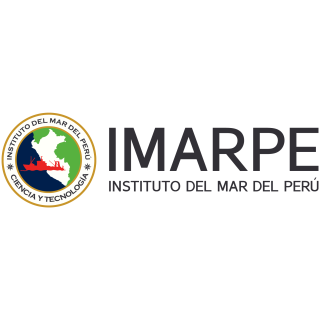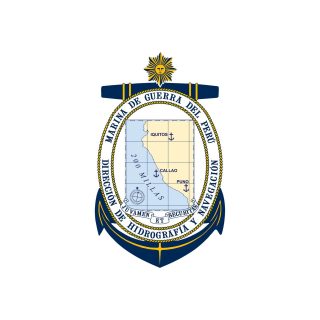Expedition dates: July 6 – Aug. 9, 2024
Numerous species, including seabirds, whales, and sea turtles, likely utilize the nutrient-rich waters circulating through Peru’s Nazca Ridge National Reserve for sustenance. Still, little is known about what lives in this Ocean region. An unknown number of prominent seamounts with peaks ranging from 1870 to 1903 meters below the surface lie within the protected area — undersea mountains that have never been fully characterized or explored. Peruvian scientists do not know what ecosystems they support. They have no baseline information to inform managing and protecting the habitat, species, and communities in an area thought to be a biodiversity hotspot.
Dr. Ursula Mendoza and Víctor Aramayo of Instituto del Mar del Peru and a multidisciplinary team will use the advanced technologies and resources available on R/V Falkor (too) to map and characterize unexplored deep-water regions within this marine protected area. The team will come fully stocked with scientific equipment, filling the ship’s aft deck with multi-net plankton tows, multi-corers, and box-corers, which they will use after they create a high-resolution map with the ship’s multibeam sonar systems to identify areas of interest. With ROV SuBastian as a robotic guide, the team will visualize the deep waters and seafloor features of this marine reserve for the first time.
The Nazca Ridge
The Nazca Ridge is a poorly explored area of the seafloor off southern Peru’s coast. The rugged terrain consists of seamounts, trenches, canyons, and guyots formed by the same volcanic source as the adjacent Salas y Gómez Ridge. It is the oldest of the two seamount chains, with some sections estimated to be over eleven million years old. The tops of the tallest seamounts on the ridge are nearly 2000 meters below the Ocean’s surface, making them some of the deepest seamounts in the world. The entire ridge is a massive seafloor feature in the Pacific with an average bathymetric relief of 1500 meters.
The waters above the ridge are suspected to be influenced by some of the most productive oceanographic patterns occurring in the Peru shelf, namely the highly productive Humboldt Current, also known as the Peru Current. Humboldt is an eastern boundary current that moves from south to north and runs parallel to the coasts of Chile and Peru, drawing frigid waters from Antarctica towards the equator.
The Earth’s rotation, the current direction, and wind patterns push surface waters away from the coastline, drawing up deep, nutrient-rich water in a process known as upwelling. Upwelling makes the Southeast Pacific one of the world’s most productive regions, resulting in massive plankton blooms that support an intricate food web and many commercially important fisheries. An estimated 15% of the Earth’s annual fish catch makes Peru one of the leading fishing nations in the world.
Upwelling is less intense away from Peru’s coastline, and scientists are still working to determine if and how the Nazca Ridge is influenced by or influencing upwelling in the region. Because of the high productivity in the surface waters above the ridge, it is estimated that a comparatively large quantity of organic matter sinks and delivers nutrients to the seafloor; this could facilitate deep-sea biodiversity along the ridge while burying some seafloor features in a thick layer of sediment that could be important for carbon storage. Exploring this region and its processes will aid scientific understanding of the history and development of Peru’s upwelling system and other climactic patterns like El Niño-Southern Oscillation, or ENSO.
Nazca Ridge National Reserve
The Nazca Ridge National Reserve, established in 2021, expanded Peru’s total marine protected area from one to approximately eight percent. The 62,392 square-kilometer reserve protects an undetermined number of seamounts along the Nazca Ridge. Peru zoned the reserve to allow artisanal and industrial fishing above the 1000-meter depth to support its storied fishing industry while protecting the tops of the seamounts.
These underwater mountains provide a rocky surface for benthic habitat-forming organisms like corals and sponges to cling to and a position in water currents to dine on organic matter as it falls from above. Soft sediments on the ridge are also suspected to support an abundance of benthic organisms. The geologic activity on the ridge may also result in methane seeps and hydrothermal vents, yet their presence is not yet known. The potential for biodiversity hotspots is high. However, the depths of these seamounts make research impossible without the research vessels, advanced technology, and deep-sea-rated equipment.
A fully stocked aft deck
To scientifically describe the deep sea regions of the reserve, Mendoza, Aramayo, and their colleagues will characterize the reserve’s physics, chemistry, biology, geology, and microbiology. Their work will provide vital data for managing this critical marine protected area. While the science team will collect most of their data within the reserve, they will also explore areas outside the reserve boundaries to analyze biological connectivity and geological features explaining ecological processes. The findings will significantly advance the goals of biodiversity and habitat comparisons by providing critical data to enhance the understanding of these deep-sea ecosystems. This contribution will be invaluable for ongoing and future research endeavors in this large marine reserve.
To characterize the geology, chemistry, ocean physics, microbiology, and biology of the Nazca Ridge National Reserve, the science team will use multiple net plankton tows, rosette, multi-corers, box corers, gravity corers, landers, multibeam sonar, and ROV SuBastian for an interdisciplinary description of this deep-sea region. These tools will collect vital sediment, water, bathymetric, and biological samples for a holistic understanding of the marine environment within the reserve.
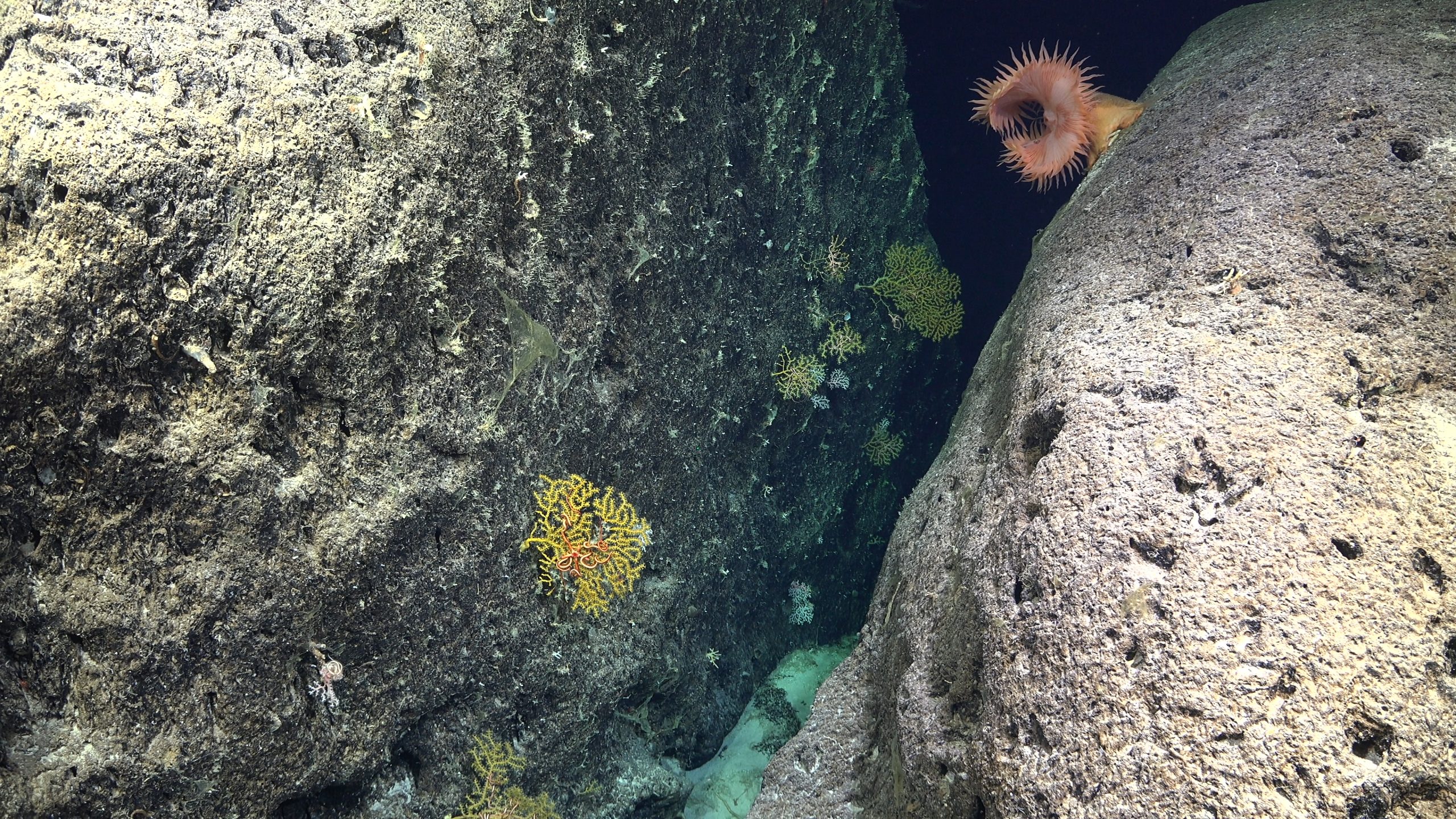


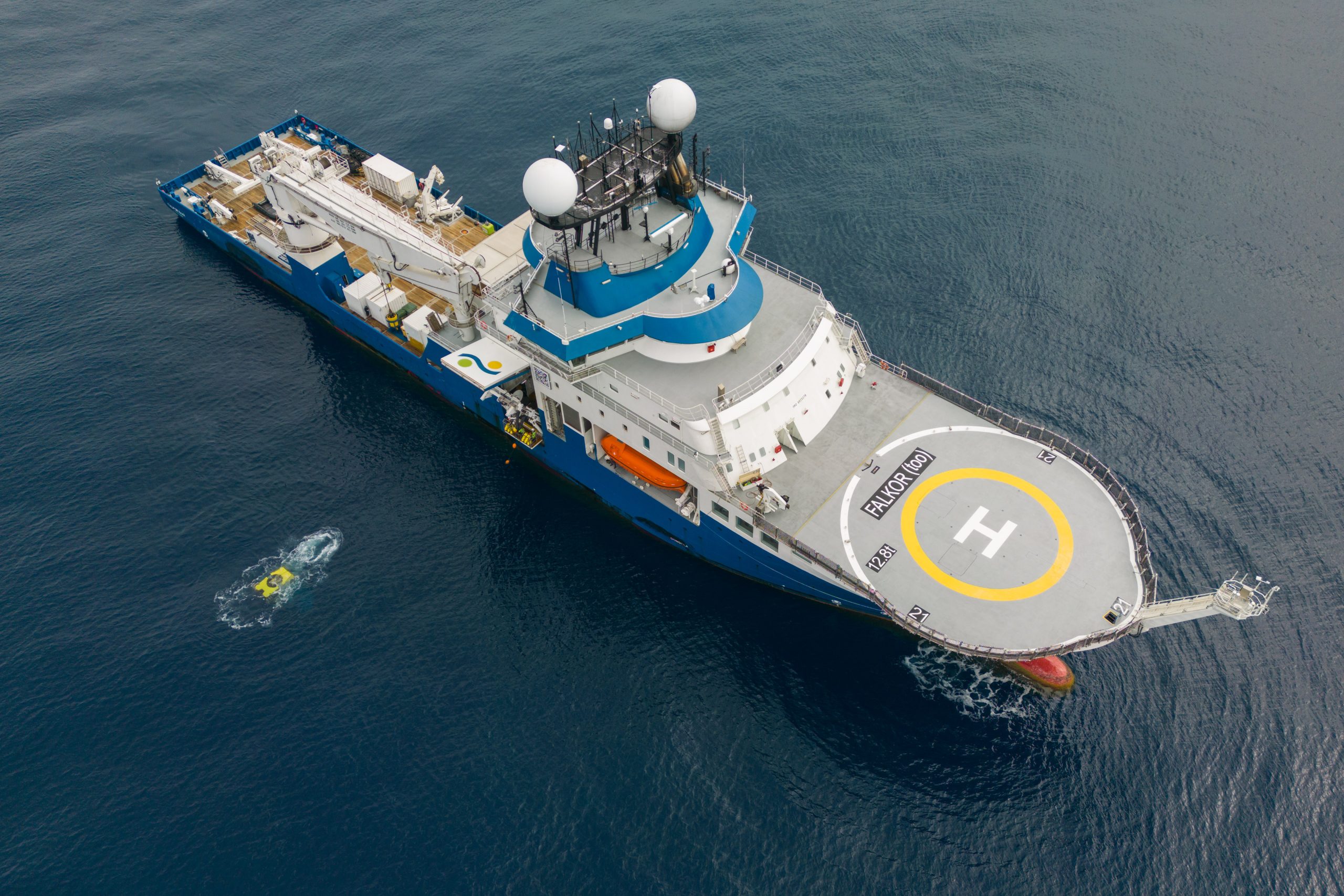
Team
